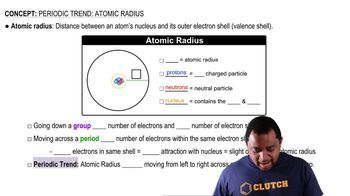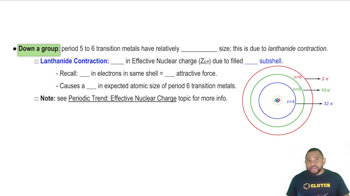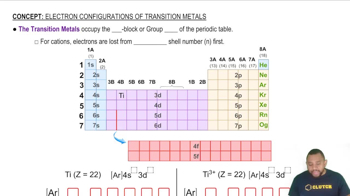Here are the essential concepts you must grasp in order to answer the question correctly.
Atomic Radius
Atomic radius is a measure of the size of an atom, typically defined as the distance from the nucleus to the outermost electron shell. It can vary significantly across different elements due to factors such as electron shielding and effective nuclear charge. Generally, atomic radii increase down a group in the periodic table and decrease across a period.
Recommended video:
Lanthanide Contraction
Lanthanide contraction refers to the phenomenon where the atomic and ionic radii of the lanthanide series elements decrease with increasing atomic number. This occurs due to the poor shielding effect of the f-electrons, leading to a greater effective nuclear charge felt by the outer electrons. As a result, elements like Y and La exhibit larger differences in atomic radii compared to transition metals like Zr and Hf.
Recommended video:
Transition Metals and Similar Radii
Transition metals often exhibit similar atomic radii due to their comparable electron configurations and the presence of d-electrons. In the case of Zr and Hf, both elements belong to the same group and have similar effective nuclear charges, resulting in nearly identical atomic sizes. This trend is common among transition metals, where the addition of electrons occurs in the inner d-orbitals, leading to minimal changes in atomic radius.
Recommended video:




